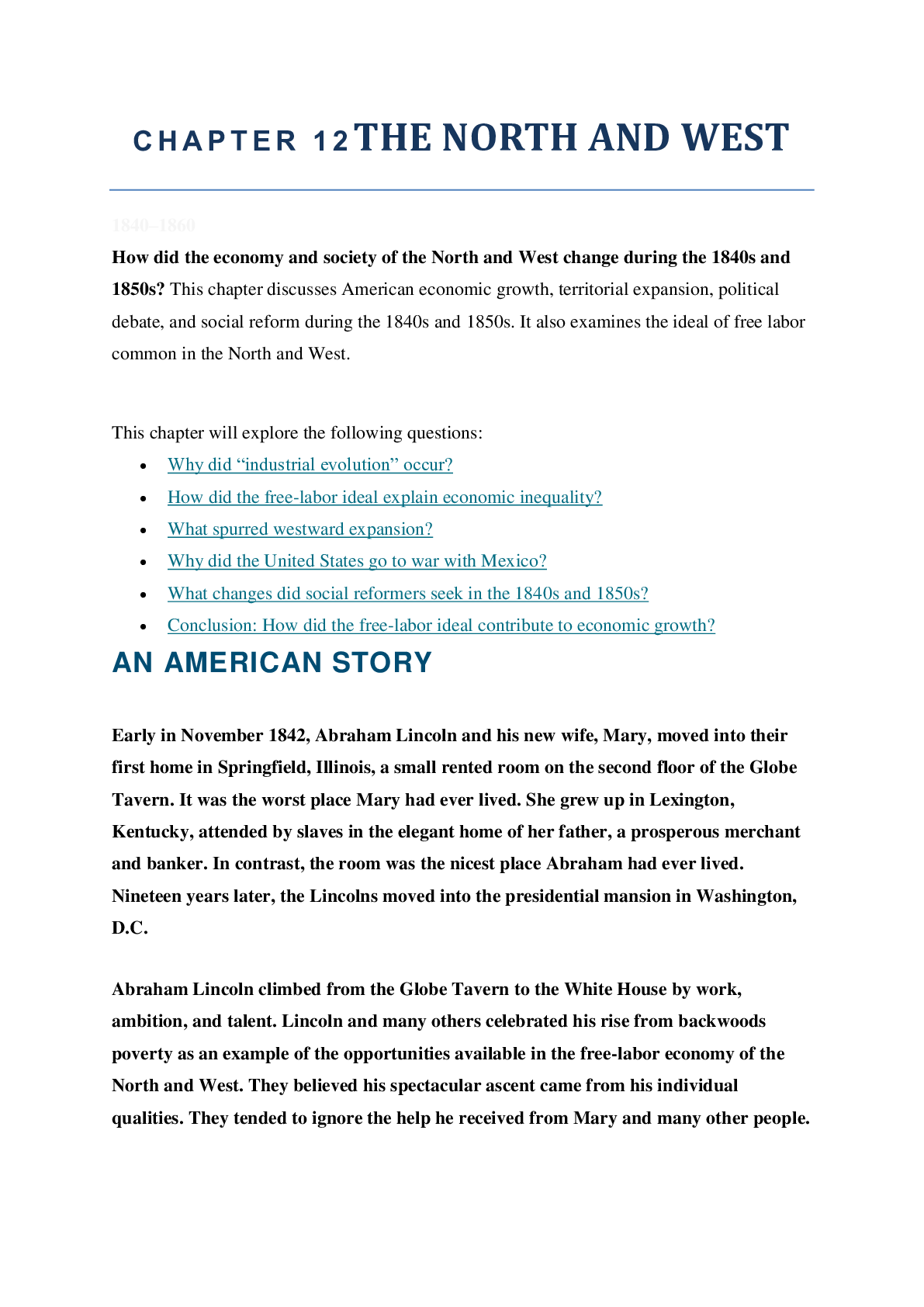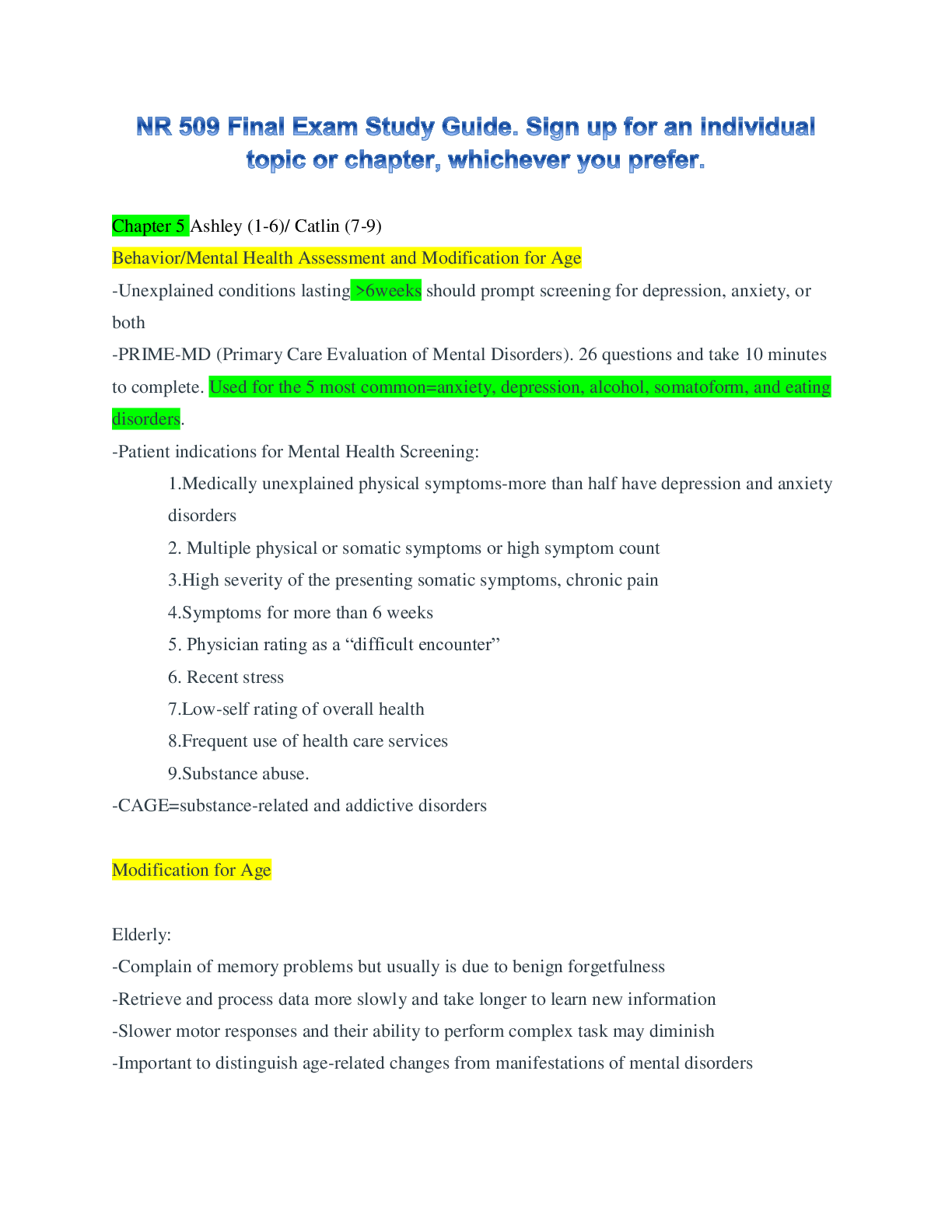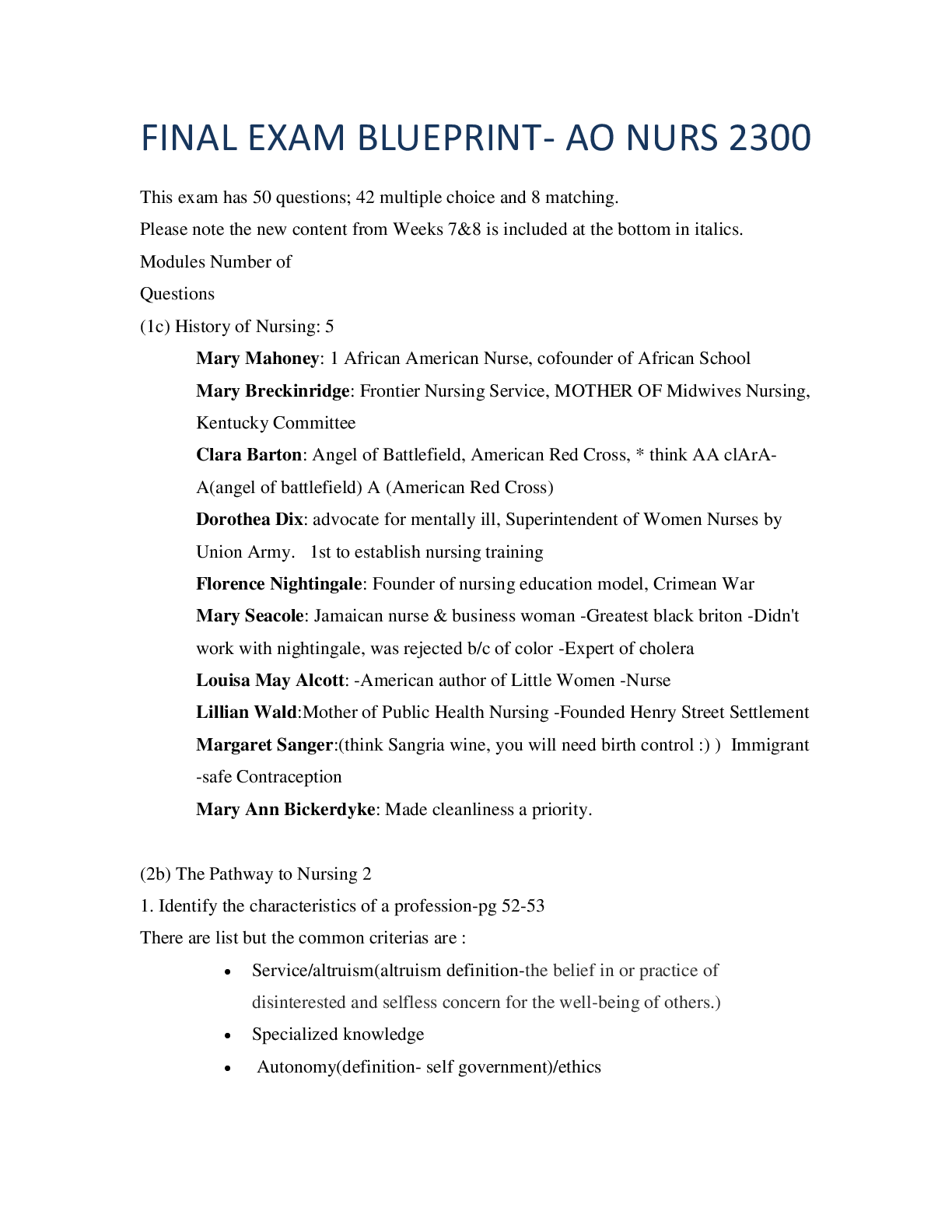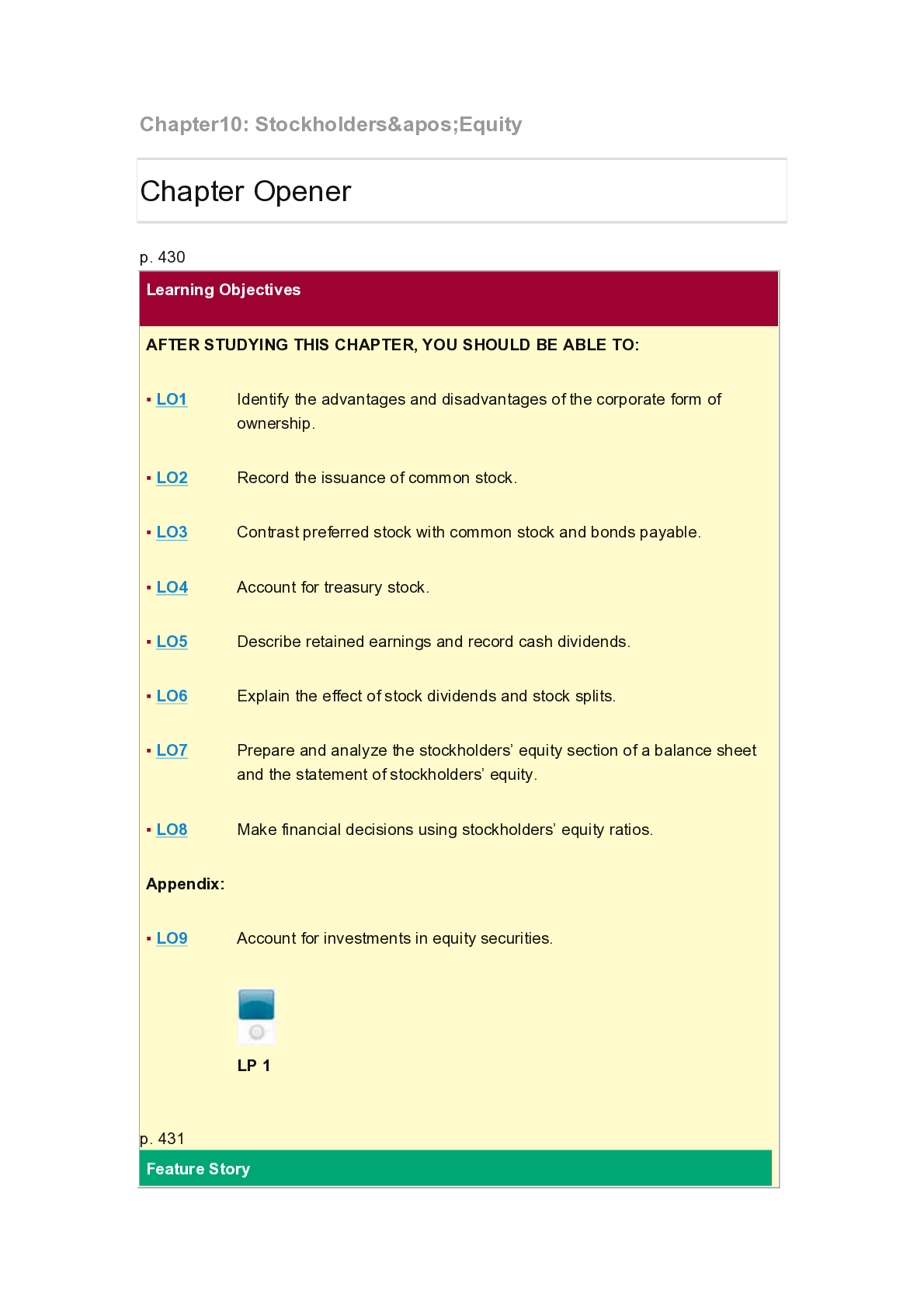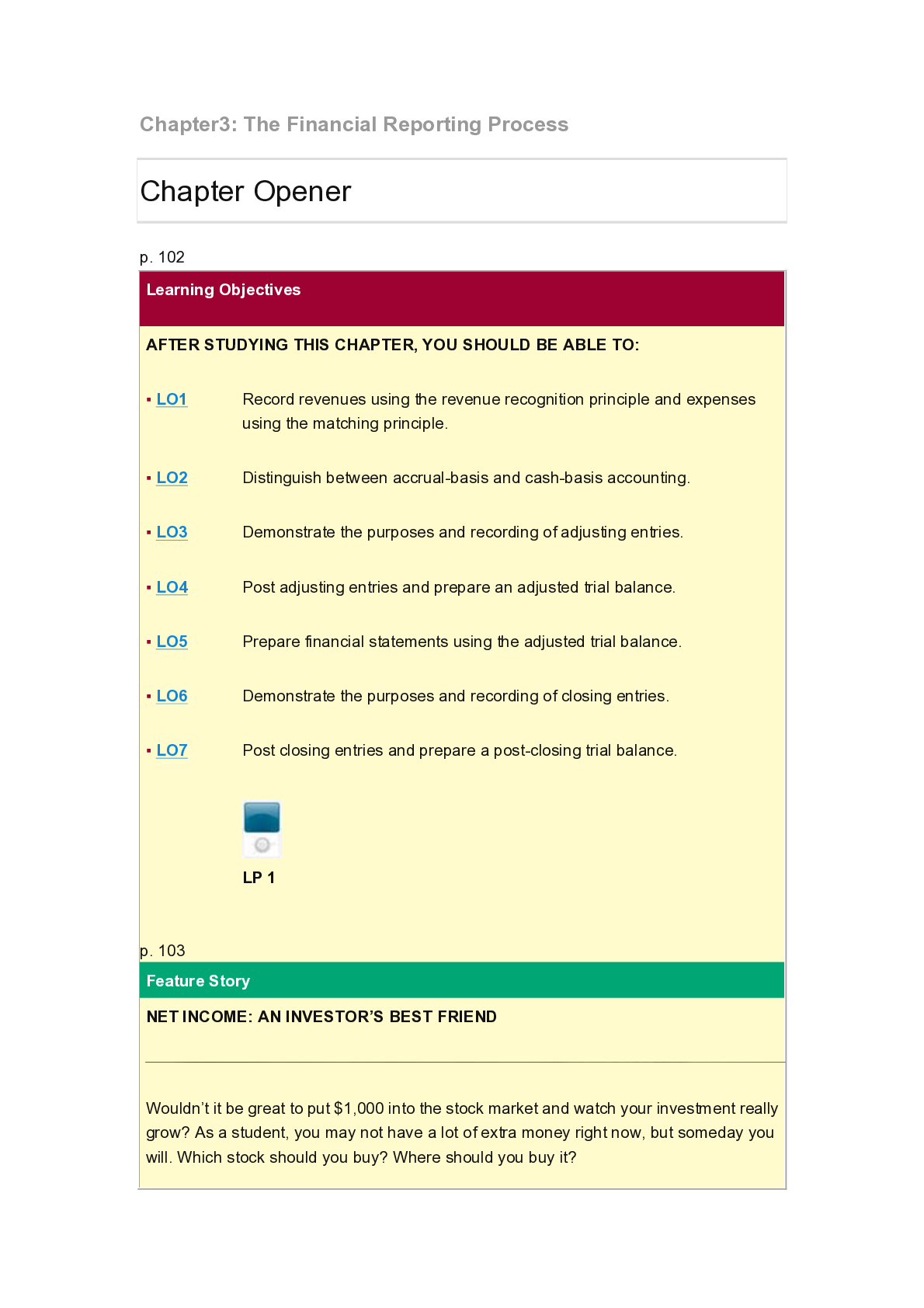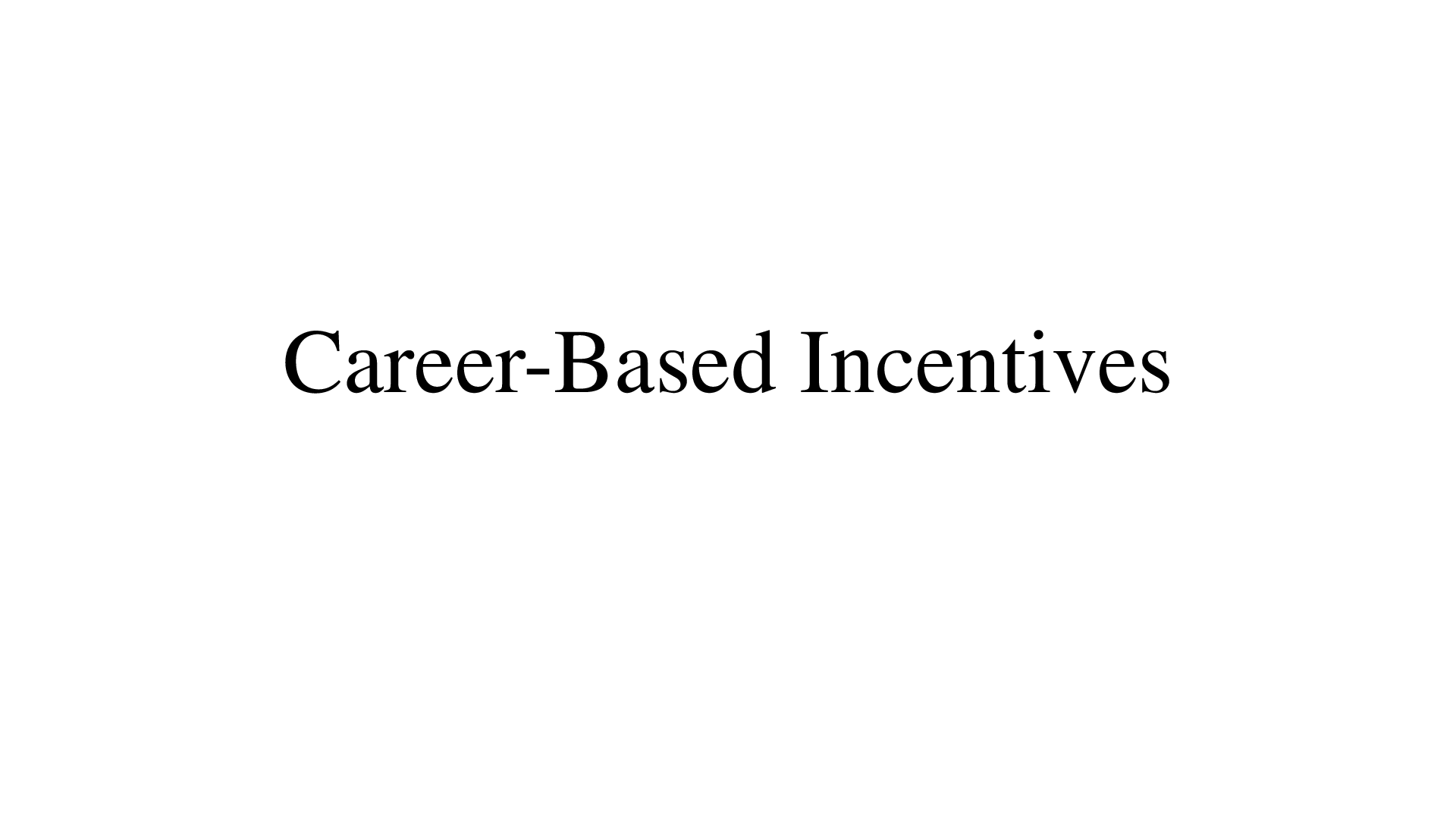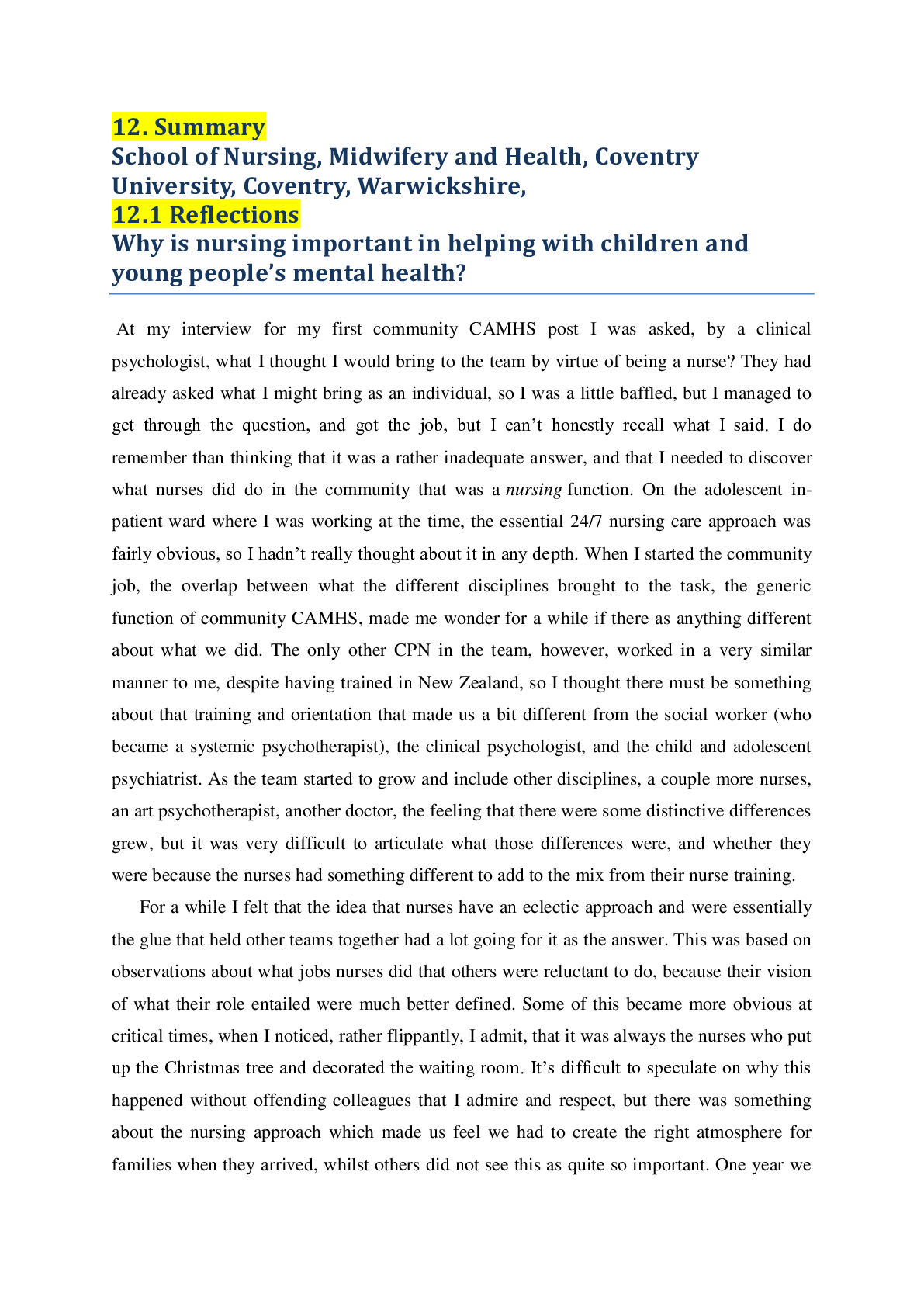*NURSING > Study Notes > Children and Young People with Eating Problems and Disorders Laurence Baldwin (ed.)Nursing Skills f (All)
Children and Young People with Eating Problems and Disorders Laurence Baldwin (ed.)Nursing Skills for Children and Young People’s Mental Healthdoi.org/10.1007/978-3-030-18679-1_8 8. Helping Children and Young People with Eating Problems and Disorders 8.2 A Skills-Based Approach to Assessment
Document Content and Description Below
Children and Young People with Eating Problems and Disorders Laurence Baldwin (ed.)Nursing Skills for Children and Young People’s Mental Healthdoi.org/10.1007/978-3-030-18679-1_8 8. Helping Ch... ildren and Young People with Eating Problems and Disorders 8.2 A Skills-Based Approach to Assessment Anorexia Nervosa Case Example One: Annie Case Study Two: Betty Case Study Three: Connie Case Study Five: Elaine 8.4 Bulimia Nervosa Case Study Seven: Gina 8.5 Orthorexia Nervosa Case Study Nine: Ivan References 1. Anderson T (1987) The reflecting team: dialog and meta-dialog in clinical work. Fam Process 26:415–481Crossref 2. Boston P (2000) Systemic family therapy and the influence of post-modernism. Adv Psychiatr Treat 6:250–257Crossref 3. Claude-Pierre P (1997) The secret language of eating disorders. Random House Canada, Toronto 4. DAWBA (2012) Development and wellbeing assessment. www.dawba.info/a0.html. Accessed 1 March 2019 5. Dunn T, Bratman S (2016) On orthorexia nervosa: a review of the literature and proposed diagnostic criteria. Eat Behav 21:11–17Crossref 6. Eisler I et al (2016) Maudsley service manual for child and adolescent eating disorders. www.national.slam.nhs.uk/wp-content/uploads/2011/11/Maudsley-Service-Manual-for-Child-and-Adolescent-Eating-Disorders-July-2016.pdf. Accessed 1 March 2019 7. Halse C, Honey A, Broughtwood D (2007) The paradox of virtue: (re)thinking deviance, anorexia and schooling. Gend Educ 19(2):219–235Crossref 8. Kinnaird E, Norton C, Tchanturia K (2017) Clinician’s views on working withanorexia nervosa and autistic spectrum disorder: a qualitative study. BMC Psychiatry 17:292Crossref 9. Kinsella P, Garland A (2008) Cognitive behavioural therapy for mental health workers: a beginner’s guide. Routledge, HoveCrossref 10. Larcher V, Hutchinson A (2008) How should paediatricians assess Gillick competence? Arch Dis Child 95:305–307 11. McDougall et al (2017) Children and young people’s mental health: essentials for nurses and other professionals. Routledge, Abingdon 12. NICE (2017) NICE guideline (NG69) eating disorders: recognition and treatment. NICE, London 13. RCPsych (2014) College report 189: MARSIPAN—management of really sick patients with anorexia nervosa. Royal College of Psychiatrists, London 14. RCPsych (2019) Information on anorexia and bulimia. www.rcpsych.ac.uk/mental-health/problems-disorders/anorexia-and-bulimia. Accessed 1 March 2019 15. Rikani et al (2013) A critique of the literature on the etiology of eating disorders. Ann Neurosci 20(4):157–161Crossref 16. Smink FRE, van Hoeken D, Hoek HW (2012) Epidemiology of eating disorders: incidence, prevalence and mortality rates. Curr Psychiatry Rep 14(4):406–414Crossref 17. Wright LM, Leahey M (2013) Nurses and families: a guide to family assessment and intervention, 6th edn. FA Davis, Philadelphia Footnotes 1 Whilst BMI is not a perfect indicator of difficulties, particularly in younger children, we have used it throughout this chapter as a rough guide to where different individuals lay in comparison to the ‘average’ BMI of 18.5–25. 2 At the time of this case our local services had a general CAMHS in-patient unit on the same campus as the community service. Since this time the unit has expanded and also has a purpose-built specialist Eating Disorders facility, but back then we still had to send young people a long way from home for specialist treatment. [Show More]
Last updated: 2 years ago
Preview 1 out of 40 pages

Buy this document to get the full access instantly
Instant Download Access after purchase
Buy NowInstant download
We Accept:

Reviews( 0 )
$5.00
Can't find what you want? Try our AI powered Search
Document information
Connected school, study & course
About the document
Uploaded On
May 20, 2020
Number of pages
40
Written in
Additional information
This document has been written for:
Uploaded
May 20, 2020
Downloads
0
Views
101

